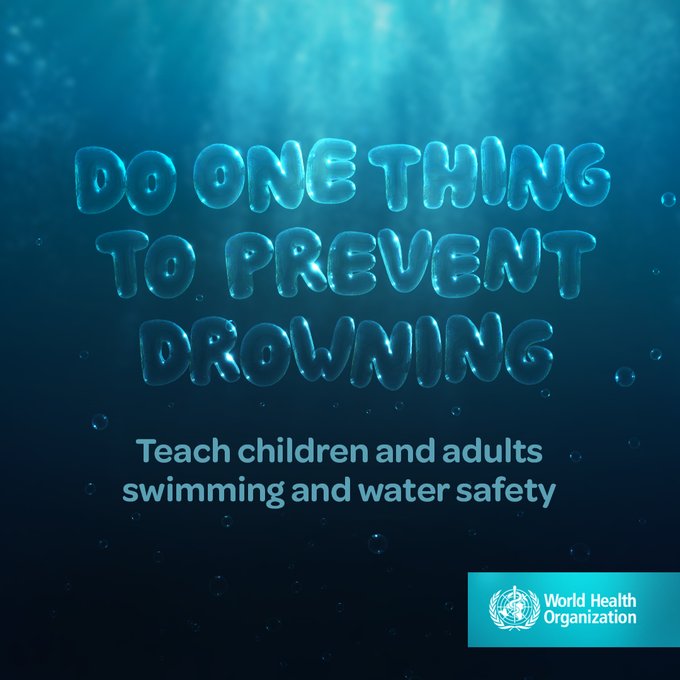|
Getting your Trinity Audio player ready...
|
Writes Marlvin Ngiza
The United Nations has cited drowning as a major public health problem which is claiming an estimate of 236 000 each year with emphasis placed on multi-sectoral action on installing barriers to access to water, strengthening education on swimming, improving flood risk management, and enforcing safe boating regulations among others.
In a message to mark the World Drowning Prevention Day which is commemorated annually on 25 July, the UN said that the day was crucial to offer life-saving solutions and establish drowning prevention measures.
This year’s commemorations were running under the theme “Anyone can drown, no one should” and it aims to achieve the safety of people in and around water.
“This global advocacy event serves as an opportunity to highlight the tragic and profound impact of drowning on families and communities and to offer life-saving solutions to prevent it.
“Every year, an estimated 236,000 people drown, making drowning a major public health problem worldwide. Drowning is one of the leading causes of death globally for children and young people aged 1-24 years. Drowning is the third leading cause of unintentional injury death, accounting for 7% of all injury-related deaths. All stakeholders – governments, UN agencies, civil society organizations, the private sector, academia, and individuals – are invited to mark World Drowning Prevention Day by highlighting the need for urgent, coordinated, and multi-sectoral action on proven measures such as: installing barriers controlling access to water; providing safe places away from water such as crèches for pre-school children with capable childcare; teaching swimming, water safety, and safe rescue skills; training bystanders in safe rescue and resuscitation; setting and enforcing safe boating, shipping, and ferry regulations and improving flood risk management, ” said the UN.
Meanwhile, World Health Organisation has called upon governments to prioritize investing in drowning prevention with a strong urge to adhere to safety measures.
“The Global report on drowning pointed out that drowning has been highly overlooked to date, and that a great deal more should be done by governments and the research and policy communities to prioritize drowning prevention and its integration with other public health agendas. The global report provides recommendations to governments to tailor and implement effective drowning prevention programmes in their settings, improve data about drowning, and develop national water safety plans. The report also points out the multisectoral nature of drowning and calls for greater coordination and collaboration among UN agencies, governments, NGOs, and academic institutions.
“There are many actions to prevent drowning. Covering wells, using doorway barriers and playpens, fencing swimming pools, and otherwise controlling access to water hazards greatly reduces water hazard exposure and risk, “said the WHO.
The global burden of death from drowning was said to be felt in all economies and regions however, low- and middle-income countries account for over 90% of unintentional drowning deaths; over half of the world’s drowning occurs in the WHO Western Pacific Region, and WHO South-East Asia Region; drowning death rates are highest in the WHO Western Pacific Region, and are 27-32 times higher than those seen in the United Kingdom or Germany, respectively.
The WHO Global Report on Drowning (2014) shows that age is one of the major risk factors for drowning. This relationship is often associated with a lapse in supervision. Globally, the highest drowning rates are among children 1–4 years, followed by children 5–9 years. In the WHO Western Pacific Region children aged 5–14 years die more frequently from drowning than any other cause.
Child drowning statistics from a number of countries presented in the Global Report on drowning are particularly revealing: Drowning is one of the top 5 causes of death for people aged 1–14 years for 48 of 85 countries with data meeting inclusion criteria (1).
Australia: drowning is the leading cause of unintentional injury death in children aged 1–3 years.
Bangladesh: drowning accounts for 43% of all deaths in children aged 1–4 years.
China: drowning is the leading cause of injury death in children aged 1–14 years.
United States of America: drowning is the second leading cause of unintentional injury death in children aged 1–14 years.






